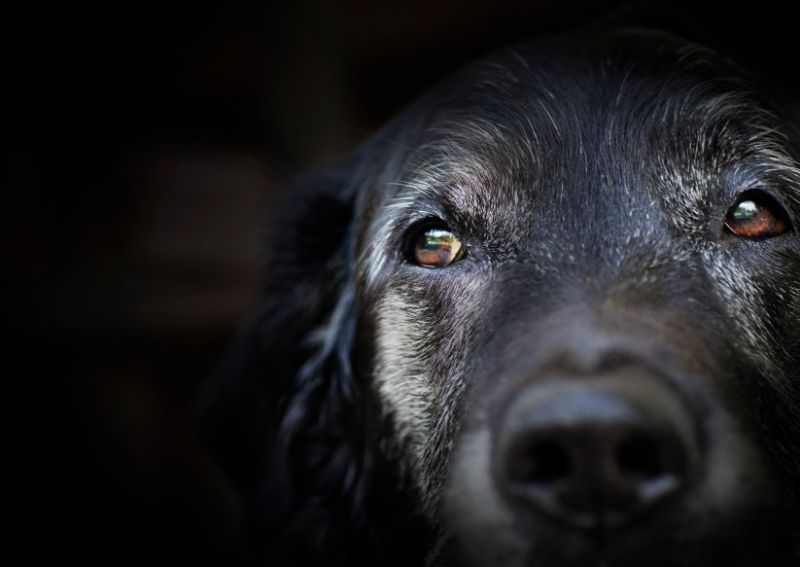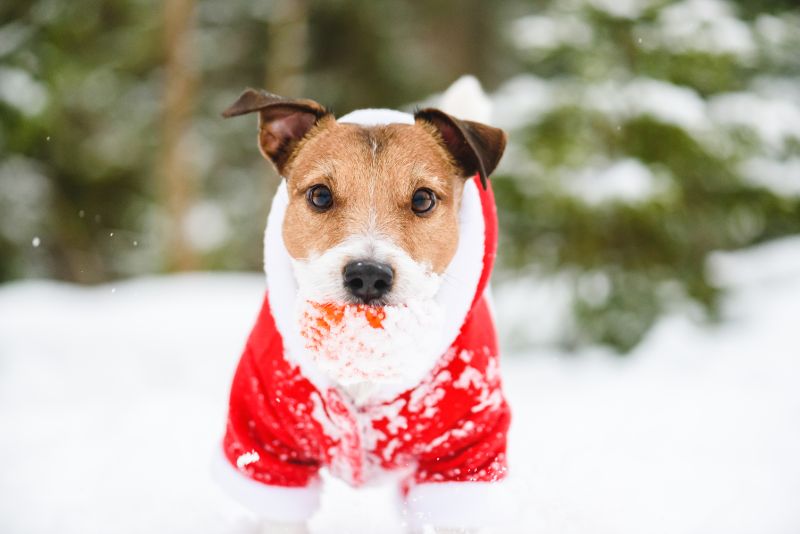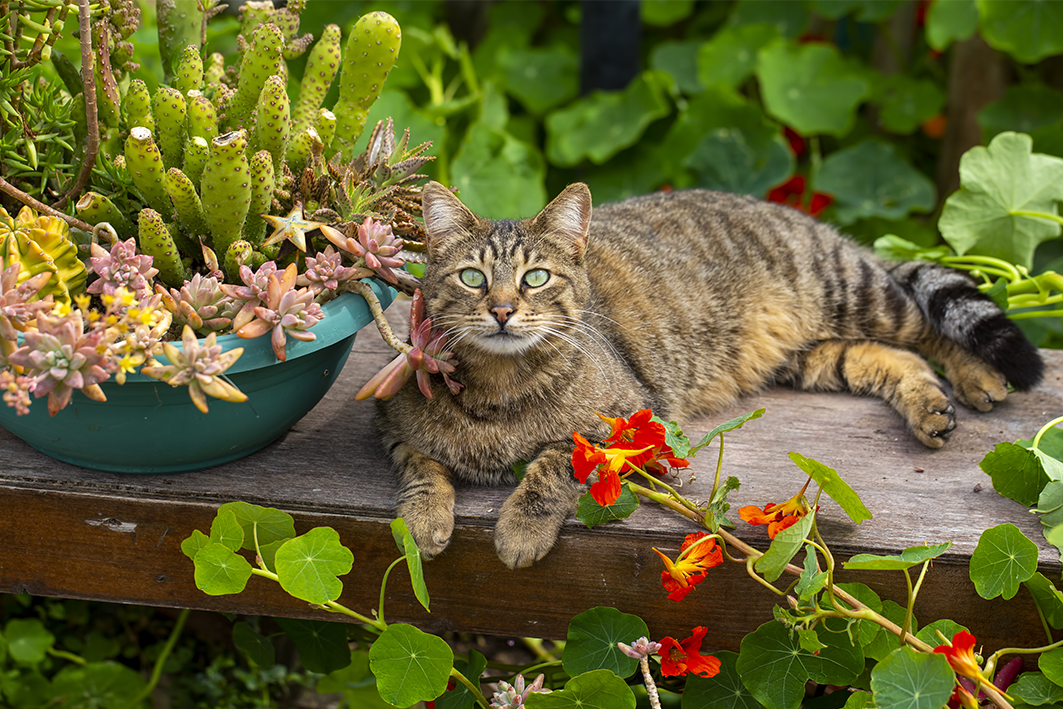Posts in Category: Pet Health & Wellness
Ins and Outs of Anal Sacs

Does your dog regularly scoot its cute backside across the living room floor?
Do you occasionally notice an unpleasant, musky odor in the air or spot a brown streak on the carpet?
Have you noticed your pet obsessively licking its rear end?
If you’ve answered “yes” to any of these questions, your pet’s anal sacs may be to blame.
While not the most exciting topic, knowing what the anal sacs are and how to properly care for them is an important component of your pet’s care.
Continue…Understanding Old Dog Vestibular Disease

Anyone who’s ever suffered from vertigo or an inner ear problem understands the unsettling dizziness, loss of coordination and nausea that can accompany these types of conditions. Dogs can experience a similar condition known as canine vestibular disease.
There are several types of canine vestibular disease. Some may be due to serious causes, such as a brain tumor, neurological infection or other neurological disorder. However, there is a benign self-limiting type that affects mostly older dogs. Because of this, it is commonly referred to as ‘old dog vestibular disease’, which is the focus of this discussion.
The symptoms of old dog vestibular disease can be quite bewildering for any pet owner. At Lone Tree Veterinary Medical Center, we see this problem in many of our older patients, so we’d like to shed some light on this mostly benign form of canine vestibular disease.
Continue…How to Keep Your Pet Fit During the Holidays

It probably comes as no surprise that “get healthier” is the most popular New Year’s resolution among Americans. Holiday meals and parties, cookies at the office and at Grandma’s house, and extra treats from friends and neighbors can add up over time, causing a run on gym memberships and diet cookbooks come January 2nd.
Pets, too, can suffer the ill effects of overindulgence, including the health and mobility consequences that go along with extra weight. Fortunately, it doesn’t have to be difficult to keep your furry friend fit and trim during the holidays.
A little bit of planning, a commitment to your pet’s well being, and the support of your Lone Tree Veterinary Medical Center team will go a long way toward making sure your pet is fit all season long.
Continue…The Reverse Sneeze: What It Is And When To Worry

You are minding your own business, when out of nowhere comes the odd, surprising, and utterly weird sound of honking or wheezy snorting from your dog. You run to your pet’s aid, only to discover that he or she is perfectly fine, standing there as though nothing has happened. But what did happen? Do you call us or drop everything and rush your pet in as an emergency?
It is likely that what your pet just experienced is known as paroxysmal respiration, more commonly called “reverse sneezing”. Hearing a reverse sneeze can certainly be alarming, but it’s often a normal occurrence for a dog or cat.
Continue…Lumps and Bumps on Pets: What are They and When to Worry

Discovering a lump or bump on your pet can be concerning at best, frightening at worst. It’s understandable to worry: Is it normal? Does my pet need to see the veterinarian right away?
While new lumps and bumps on our pets should never be ignored, in many cases, they end up being nothing to worry about. Our medical team at Lone Tree Veterinary Medical Center has seen countless lumps and bumps, so you can rely on us to help determine when one is a problem that needs to be addressed and when it’s not.
Continue…Healthy and Clean: Why Home Cat Grooming is so Important

Cats are clean by nature. In fact, it can sometimes seem that your cat spends half its time washing its face and ears, smoothing down fur, cleaning out paw pads, and generally keeping him or herself beautiful.
Regardless of how well your cat takes care of itself, most cats can benefit from a little help. Home cat grooming can help you keep a close eye on your cat’s haircoat, skin, and nails, as well as decrease hairballs by removing loose fur. It can also help deepen the bond you share with your feline companion. Finally, home grooming can help ward off that dreaded visit (by your cat) to the groomer to correct matting and other problems that can result when regular maintenance needs are not addressed.
Continue…Whisker Fatigue in Cats

Whisker Fatigue is a term you may not have heard of. Whisker fatigue is actually a condition among cats that can cause significant stress.
The Incredible Whisker
It’s hard to imagine a cat without a set of luxurious, adorable whiskers. The primary function of whiskers is to serve as touch receptors that tell a cat a great deal about the world around them.
Whiskers transmit information about a cat’s environment via tiny sensory organs known as proprioceptors. These organs are located at the base of each whisker. They help cats navigate their environment in the dark, hunt for prey and determine whether or not they can fit into a tight space.
Continue…Hitchin’ A Ride: The Case for Flea and Tick Prevention

Spring is a notoriously fickle time in Colorado. One day, we’re enjoying temperatures in the 60s, and the next day we’re hit with a snow storm! This variation between cold and warm weather can make it easy to ignore your pet’s parasite prevention. Unfortunately, a little spring snow isn’t enough to keep fleas and ticks at bay for long. Although they may seem inactive during a cold spell, it only takes a few 50 to 60 degree days for parasites to become active again.
Pets most often pick up fleas and ticks outdoors after these parasites drop from other animals onto the ground, grass, or shrubs. Even indoor pets face exposure when people carry the parasites inside on their clothing. Typically, these parasites go unnoticed until they bite your pet, causing itching, skin rashes, and hair loss. Or, as with a tick, you’ve discovered a little round bump on your pet that wasn’t there a few days before.
Continue…Heartworm Disease: A Growing Threat in Colorado

If you’re a longtime Denver area resident, you’ve surely noticed how much the metro area has grown over the past 10 years. And, our population growth continues to extend outward beyond the city and surrounding suburban areas.
While Colorado’s popularity as a great place to live is mostly a good thing, it also affects us in ways that we may not think of, such as how it affects our pets. With more and more people and pets moving here, the number of heartworm disease cases seen by local veterinarians has increased every year.
Continue…Safeguarding Against Outdoor Pet Toxins

As we settle in for another season of tinkering around in our garage and backyard, it’s important to keep your pet’s safety in mind. Many of the chemicals we commonly use for outdoor maintenance can injure or even kill a pet. Although you may not expect your pet to get into trouble in your garage or yard, pets can be known to eat just about anything, so protecting them from outdoor pet toxins is essential.
Continue…


